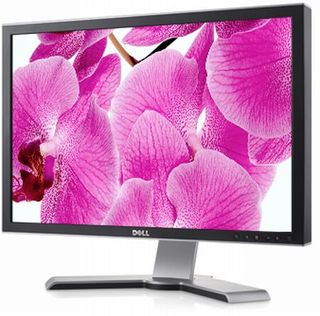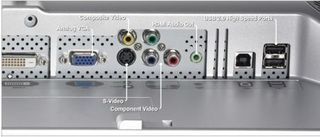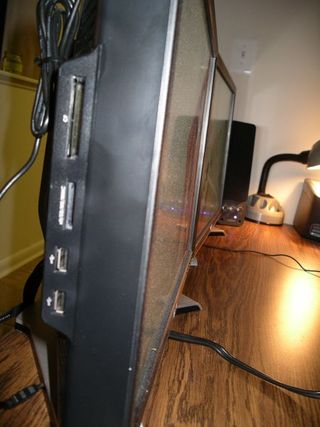Tips For The Multi-Display Life
Thinking about adding a second monitor to your desk? Here are reasons to take the plunge, and options to consider while shopping and setting it up.
Choosing the right display for your space and needs

The first thing to consider is the size of the display you already have. If you use a desktop computer and have a single display attached to your screen now, how do you feel about it? Is your desktop cluttered with icons and windows? If you had a few more inches, or the ability to increase the screen resolution of your display, would you? You can check the screen resolution in Windows in the Display Properties, and in Mac OS you can find it in the Displays System Preferences.
A note about screen resolutions: the larger your display, the greater the native resolution, which means your toolbars and icons will look smaller. This means you get more real estate, but can also make captions and labels hard to read. A sure ticket to eyestrain is to purchase a large display and run it at 1024x768. Make a point to run your display at its native resolution (1440x900 on most widescreen 19-inch displays, 1680x1050 on 22-inch displays, and 1920x1200 on most 24-inch displays. Check the manual that comes with your new display for details) if you can. If you find everything’s still too small, use the Display Properties in Windows and the Finder “View” Options in MacOS’s to make your icons and desktop text larger.

Next, consider the role you want your monitor to play. Most new monitors now comewith additional video inputs, making it possible to turn your workstation into an entertainment center. If the idea of connecting your XBox 360 to a shiny new 24-inch display at your desk excites you, you may want to look for a model that also has HDMI or component input ports.
If you’re an avid photographer, you may want to look for a display that has a built-in card reader.

Next, consider your workspace. If you have a desk that’s wide but shallow, two 24” displays may force you to physically turn your head to get from the left side of the left display to the right side of the right display. That won’t work. Massive displays for a small desk, or small displays for a large desk are both great ways to experience eyestrain. In this case, there is such a thing a screen that is too big or too many displays in a small workspace. Two will work for most desks, but once you start looking to add a third or fourth, not only do you have to pay attention to whether your computer’s graphics card can handle it, you may need to shop for a desk that can support that many monitors.
If your primary computer is a laptop, you may consider purchasing a single larger display, rather than the two smaller displays you’d want if you used a desktop. Some laptop users turn off their built-in screens as soon as they connect to an external one, but we personally prefer to leave thelaptop display on and put the e-mail client in the smaller display while we work in the larger one. On the desk, we have two displays of the same size and keep primary apps in the display on the left, and secondary apps (e-mail client, IM client, notification apps and widgets, and my app) all on the display on the right.
If you do decide to leave your laptop open while you use an external display, keep in mind you may be running your laptop monitor at a different screen resolution than the monitor it’s connected to. You may also need to work with the display settings to make sure the external one is the default display, if that’s what you prefer. Most apps will still open as though the built-in monitor is the default one, and you’ll find yourself dragging windows a lot and having to resize them. The same applies if you’re running a desktop with multiple displays with different screen resolutions: you’ll wind up dragging and resizing windows more often than if you had two monitors that are the same size. For most people it’s no hassle, it just takes getting used to.
Sign up to get the BEST of Tom's Guide direct to your inbox.
Get instant access to breaking news, the hottest reviews, great deals and helpful tips.
Current page: Choosing the right display for your space and needs
Prev Page Multiple Displays and Productivity Next Page Shopping For Deals and Brands-
cadder I run CAD and have 2 22" 16:10 displays on my desk. This is almost too much width, it sacrifices open space on each side that I would use to lay large documents for reference.Reply
If you already have one monitor and you want to buy a second one, first measure your space, second measure the height and width of your current monitor. It might look funny if you have a 4:3 monitor that is fairly tall and you buy a widescreen that ends up being wider but not quite as tall. But I think it would be OK if the new widescreen is taller. Also be prepared to have different colors between the 2 monitors. One might look a bit blue compared to the other one for instance, and it might be difficult to match the brightnesses between them. If possible buy 2 matching monitors and replace what you already have.
Of course always check that your computer has ports for connection of 2 monitors. Older PC's will have 15-pin VGA connectors, newer PC's will probably have the rectangular DVI connectors, or even HDMI. Monitors will come with different types of inputs, and possibly with a variety of cables and/or adapters. If you know what you have then when you buy your monitors you can be sure they will work right away without needing another trip to the store for new cables and/or adapters. -
socalboomer Dual monitors is also very inexpensive - dual 17" monitors can greatly increase your real estate and your productivity for very little money (17" monitors are CHEAP).Reply
Personally, I use four, stacked 2x2, and it is amazing. One is dedicated to email, one to other email plus calendars and utilities, one is for terminal windows (to servers) as well as general work, and a wider monitor is there for general purpose. Amazing - and go back to even dual monitors is really limiting!
One little note - for more than two monitors, you're going to need a second video card (or a single ATI) - make sure your computer will handle it (likely need dual PCIx16 slots, at least physical slots) - but oh it's worth it! -
liquid0h My office at work uses dual screens. I remember when we first got them, we thought it might have been a waste of money. But going on 3 years now and we haven't looked back. Working with multiple Excel sheets or Access tables is a breeze now.Reply -
m-manla I'm planning to replace my old 22" 16:10 monitor in for two 22" 16:9 monitor. I have worked on dual screens in different occasions and there is nothing like it.Reply -
tommysch As a gamer I run a 24" 1920*1080 main screen and a 19" 1280*1080 secondary screen. Its particularly useful when playing a FPS competitively. You can have your GPU temp, CPU temp, ping to many references, bandwidth monitor, vent/mumble/TS always in sight, core usage, RAM usage and messenger while playing a full screen game. I dont even use my G15 screen anymore.Reply -
skpman thanks TH! i was really looking for the software that gives you dual taskbars... just bought Ultramon! loving itttReply
BTW my work sucks. us engineers are using 17" (yeah, seriously) monitors. I bought my own secondary because it was getting so frustrating. My 26" at home is more than enough for my personal needs...
On a related note.. anyone from TH know about this product:
http://www.soundgraph.com/fingervu706-feature-en/
-
ds1495 Oops, just noticed a minor little spelling error in the article. When it says: "If so, are three monitors better than too that should be spelled two :PReply
Anyways, nice article, I have been looking into getting a second monitor for a while now, perhaps I'll take the plunge now. -
JohnnyLucky Thank you for a very informative article . Ever since I built my new pc 3 months ago I've been wanting to get mutiple monitors for both work and play. The article cleared up some questions I had about monitor and desk sizes. Turns out I was right in thinking my 23 inch deep desk would be too shallow for what I want.Reply -
volks1470 hooray for me, I just took the plunge a week ago. ATI makes a multi-monitor setup such a breeze. I love bezel compensation!Reply
